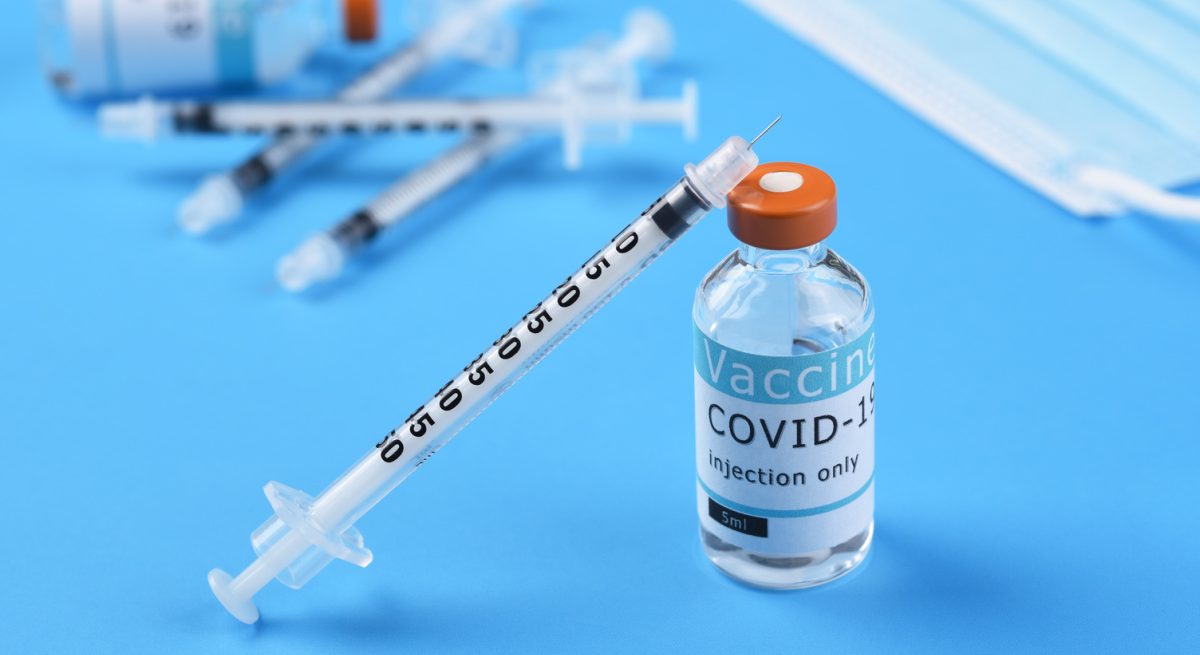Best Practices to Navigate OSHA’s ETS Vaccine Policy
6 Min Read By Jason D. Friedman
On Thursday November 4, 2021, the Department of Labor’s Occupational Safety and Health Administration (OSHA) announced a new Emergency Temporary Standard (ETS) that requires employers with 100 or more employees to ensure that each of their employees is either (i) fully vaccinated, or (ii) tests negative for COVID-19 on at least a weekly basis. The ETS is intended to preempt any State or local requirements that ban or limit an employer from requiring vaccination, face covering, or testing. The ETS will also require that these employers provide paid-time off for employees to get vaccinated and ensure that all unvaccinated workers wear a face mask in the workplace. The ETS covers approximately 84 million employees, including the vast majority of those in the restaurant industry.
While not exhaustive, the below steps are designed to help restaurants navigate compliance with the ETS and potential fallout with staff:
Step 1 – Does the ETS Apply to Me?
The ETS applies to all employers with 100+ employees at any time while the ETS is in effect. For purposes of reaching 100+ employees, restaurant owners must include in the total number all employees (both part time, full time, and minors) at all locations, as well as any corporate employees.
Step 2 – Establish a Written Policy
Employers must establish, implement, and enforce a mandatory vaccination policy which requires all existing and new employees to be fully vaccinated (exemptions should be made for medical necessity and for employees who are legally entitled to a reasonable accommodation, e.g., religious accommodation under Title VII). The employer’s mandatory vaccination policy may include an exemption, permitting each employee to choose between vaccination or providing proof of weekly testing and wearing a face covering while working, regardless of whether they have a legal basis for requesting an accommodation. These policies must be provided to employees in language that employees can comprehend.
Step 3 – Enforce the Written Policy
1. What does it mean to be vaccinated?
Employers must first determine the vaccination status of each employee. If an employee cannot provide acceptable proof of vaccination, they must be considered unvaccinated. In order to qualify as fully vaccinated, by January 4, 2022, an employee must receive either two doses of the Pfizer or Moderna vaccines, or one dose of the Johnson & Johnson vaccine. At this time, a booster shot is not required to be considered fully vaccinated, although this is subject to change.
2. What if an employee wants to get vaccinated?
The ETS requires employers to provide up to four hours of paid time off for each primary vaccination series dose. This means that time spent getting vaccinated, including travel time, must be considered paid time (although it need not be considered time “worked” for overtime purposes), up to four hours per dose. Further, an employer must provide reasonable time and paid sick leave to recover from side effects experienced following each dose. This paid sick leave can come from an already existing policy—but if the employee has no paid leave, an employer must provide additional leave for recovery purposes.
3. Testing unvaccinated employees
If an employer chooses to allow an employees to remain unvaccinated, and that employee interacts with coworkers or customers on a weekly basis, the employee must maintain a rigorous testing regimen. The employee must be tested at least once every seven days and provide documentation of the test result to the employer. The ETS does not require employers to provide or pay for testing, although the Department of Labor will issue further guidance related to how the ETS intersects with the FLSA’s wage and hour requirements. If an employee fails to provide test result documentation, they must be removed from the workplace and may return only upon providing negative test result documentation. There is an exemption to the testing requirement, however. Employers may not require regular COVID-19 testing of employees who are not fully vaccinated for 90 days after either a positive test or a positive diagnosis.
4. Dealing with a positive test
Under the ETS, employers must require each employee to promptly notify their employer that they are COVID-19 positive. The employer must then immediately remove the employee from the workplace. Employers are not required to provide paid time for the removal from work, although an employee may use any PTO they have accrued. After an employee tests positive, they may return to work only when the employee receives a negative result on a confirmatory COVID-19 NAAT following a positive result on a COVID-19 antigen test, or when the CDC criteria in “Isolation Guidance” is met, or when recommended by a licensed health care provider.
5. Face coverings
Employers must ensure employees who are not fully vaccinated wear a face covering when indoors and/or when occupying a vehicle with another person for work purposes. Exceptions to this rule include when an employee is alone in a fully enclosed room with the door closed and when eating or drinking. It is also the employer’s job to ensure face coverings are properly worn. Finally, the ETS does not allow employers to prohibit wearing of face coverings by visitors or customers.
6. Reporting hospitalizations and deaths
The ETS has strict deadlines for reporting COVID-19 hospitalizations and deaths. An employer must report a work-related fatality to OSHA within 8 hours of learning of the fatality, and must report a work-related hospitalization within 24 hours of learning of the in-patient hospitalization.
Step 4 – Maintain Records of Enforcement
The ETS requires employers to preserve acceptable proof of vaccination and a roster of each employee’s vaccination status. These records must be maintained as employee medical records (29 CFR 1910.1020) for as long as the ETS is in effect. If, however, the employer has already obtained the vaccination status prior to the issuance of the ETS and retained records of employee responses, the employer is not required to re-evaluate vaccination status for fully vaccinated employees. That employer must still create a roster of each employee’s status and maintain proof of vaccination documentation.
These records must be kept current and readily accessible. If requested by the employee or anyone having written consent, an employer must provide an individual’s vaccine information and test results by the end of the next business day after the request. Further, the aggregate number of fully vaccinated employees at a workplace and the total number of employees must be provided to the Assistant Secretary within 4 business hours of the request, or to any employee by the end of the next business day after the request. The ETS also requires the employer to provide its written vaccination policy to the Assistant Secretary within 4 business hours of the request and all other records and documents to the Assistant Secretary by the end of the next business day after the request.
Practical Implications
Restaurants across the country are facing challenges due to COVID-19, including issues with hiring and retaining sufficient staff. While OSHA believes the ETS is needed to protect employee safety, it is employers such as restaurants that will bear the brunt of any employee backlash. Restaurants who are subject to the ETS realistically have two choices:
1. Require vaccines for all employees.
Requiring vaccines for all employees is the simplest and lowest cost way to comply with the ETS, as it passes most of the burden of compliance on to the employee. However, before implementing such a policy, a restaurant must have a sense of how many employees, if any, they risk losing due to such a policy. If a restaurant risks closing its doors due to lack of staff, requiring a vaccine might not make business sense. It’s also possible, however, that requiring a vaccine for all employees will encourage new, vaccinated applicants to work at the restaurant if they feel safer working in an all-vaccinated environment.
2. Allow employees to not be vaccinated while still complying with the ETS.
Allowing employees to provide proof of negative tests on a weekly basis may help restaurants retain staff, but comes with a barrage of additional logistical questions and costs. While restaurants are not required to provide tests, they might find an employee will not make the effort to test on their own, so providing a weekly test at the restaurant is best for the business. On the other hand, providing testing is expensive and opens the door to additional FLSA implications—including potentially paying employees for the time it takes to test every week.
Any way you slice it, restaurants face tough choices in complying with the ETS while trying to retain staff. No matter what policies you decide to implement, be sure to take into account your staff’s attitude towards vaccines and the ease and availability of testing in your area.


